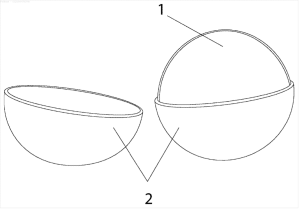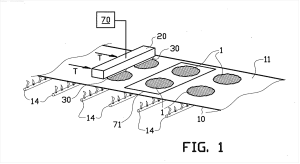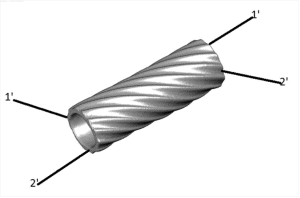The Role of Food Patents in the Food and Drink Industry
In recent years, the food industry has experienced significant growth in innovation as new technologies and research are constantly emerging. One critical aspect of food innovation is the protection of intellectual property through the use of food patents. This has led to an increase in food patent filings for food-related inventions, including new ingredients, packaging, production methods, and more.
As the food industry continues to grow and evolve, the role of food patents in protecting food and drink innovation will become increasingly important. This blog post will shed some light on some of the most intriguing inventions in the field of food innovation.
What Does a Food Patent Cover?
A food patent, or Patent Class 426, pertains to “Food or Edible Material,” and provides a platform for patenting innovations related to food technology. This patent class encompasses a broad range of food and edible materials, spanning processes, compositions, products, and products crafted through specific processes.
Inventors within this domain can either creatively modify known compositions in a novel and non-obvious manner or invent entirely new ones. However, it’s crucial to note that these compositions must still adhere to the same fundamental criteria for patent eligibility as any other technological innovation. This means they must be novel, non-obvious, useful, and fully disclosed or enabled.
A food patent is inclusive of “products and compositions in any physical form intended for consumption by humans or lower animals through the oral cavity, either in whole or in part.” This description encompasses a wide array of elements such as recipes, specific types of food packaging, food processing methods, and any other “products or compositions” that satisfy the prerequisites for a utility patent.
Food Patent Examples
Edible drink pods
The environmental impact of single-use plastics has become a growing concern, resulting in an increase in innovative solutions to this problem. Notpla’s edible drink pods are a great example of such ingenuity, offering a sustainable alternative to plastic packaging. The pods offer a biodegradable solution that reduces the need for plastic and provides a more sustainable way to consume beverages by utilising seaweed film. The success of the edible drink pods at the 2020 London Marathon demonstrates the innovative technology’s potential to reduce plastic waste on a large scale. We can expect to see more of these innovative, sustainable solutions in the food industry as consumers become more environmentally conscious. Not only do these solutions benefit the environment, but they also offer new opportunities for businesses to differentiate themselves and offer more eco-friendly products to their customers.

Device for cooking pancakes
Pancakes have always been an American classic; whether you top them with chocolate chips, syrup, or bananas, they are a delicious way to satisfy your sweet tooth. A specific company is paying attention to this market segment and has developed an automated method of producing pancakes. The mechanism dispenses, assembles, and produces pancakes and includes several nozzles for evenly dispensing batter. The automation of pancake production is an innovative step forward in the food industry. This type of food innovation can not only increase productivity but can also lead to cost savings and improved quality control. With the incorporation of technology into traditional cooking methods, we can expect to see even more advancements in the food industry in the future. Pancakes may be a timeless classic, but this automated production method shows that there is always room for improvement and innovation.

Pasta shape
In the food industry, innovation does not always mean developing entirely new products or processes; it can also mean improving on existing ones. Barilla’s new pasta shape is an example of this type of food innovation, in which a minor change in the shape of a traditional pasta can result in significant functional improvements.
By utilising a food patent for this new pasta shape, Barilla has not only created a one-of-a-kind product, but also inspired other pasta manufacturers to experiment and innovate with their pasta shapes. This type of competition and collaboration within the food industry can result in the development of even more creative and functional pasta shapes, emphasising the importance of intellectual property protection through patents. Finally, these innovations provide a better experience for consumers.

Exploring Food Patent Opportunities and Future Prospects
IP Protection in the Food Industry
In the realm of the food industry, where unique challenges to intellectual property (IP) protection persist, there is a notable trend towards employing IP, particularly in the realm of unconventional trademarks and food safety-related patents. This approach aims to safeguard the distinctive elements of food products and their packaging, encompassing attributes such as shape, colour, and overall appearance.
The Evolving Significance of IP as a Competitive Asset
Incorporating elements of creativity, research, and scientific innovation, such as advancements in 3-D printing, has ushered in a new era in the food industry. This transformation has led to a diversification of food product shapes, textures, packaging materials, and more. While the responsible application of these tools must prioritise health and safety considerations, they concurrently unlock an array of possibilities for safeguarding intellectual property through avenues like trademark protection, trade dress rights, and patent law.
Discover How Food Patent Information Can Benefit You
The innovations mentioned above are examples of ways in which scientists and engineers are revolutionising the food industry. Minesoft’s global patent information solutions, like PatBase, help organisations all over the world accelerate their innovation processes and increase their ROI by leveraging the power of patent data.
Get in touch with our team today to request a demo, and learn more about how you can utilise the power of patents.
